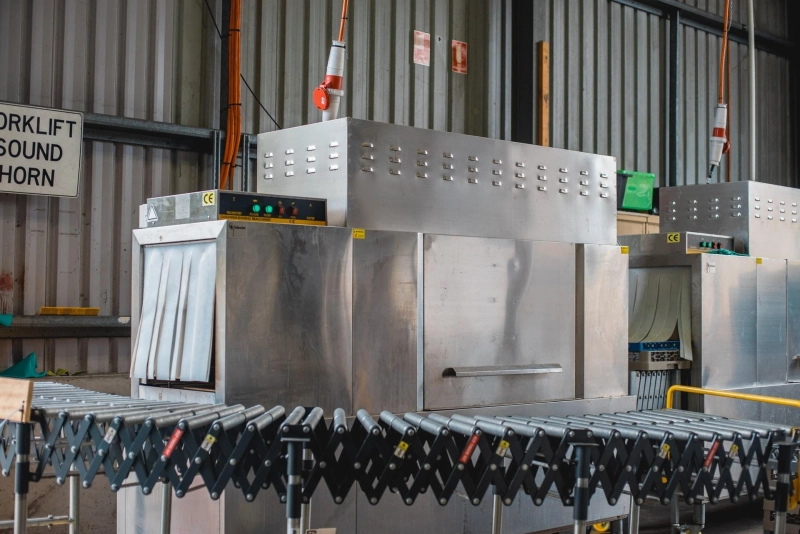Waste management may look like a simple business all over the world: councils or private operators pick up bins full of trash and transport them in a large truck to a location where it may be burned, dumped, or recycled. According to the World Bank, two billion tonnes of municipal solid waste are produced globally each year, equal to the weight of the Great Pyramid of Giza in the trash every day.rrAlthough technology has advanced rapidly in recent years, there has been a slow adoption of technology and its potential applications in the waste management field. This is expected to change in the near future, as business leaders create new tools, processes, and applications to revolutionise waste management and welcome it into the digital era.rrSourcerrSmart cities are beginning on the street level, with artificial intelligence and automation sorting recyclables and sensors, reducing waste. Singapore and Seoul, South Korea, for example, have smart, solar-powered trash cans built on their streets. Each one has a compactor, allowing it to carry more trash. When the bin is full, its sensors send a signal to the garbage collectors.rrFrom recycling to food waste utilisation, science to smartphones, I have listed different technologies supporting waste management progress.rrNew collection and disposal technologyrrThe waste collection keeps neighbourhoods clean and lowers health hazards, especially for children. Waste that is adequately contained and transported safely and frequently is less likely to attract animals and insects, smell foul, and spread disease. Therefore, it’s important to collect trash properly and efficiently and clean up afterwards.rrTrash bins come in different sizes, and handling big and heavy trash cans or wheelie bins can be difficult. By utilising a unique electro-hydraulic mechanism, mobile bin tipping machines, also known as ‘Dumpmaster’, are known for safely emptying any bin at any height. Dumpmaster is built to be safe, with full guarding and door interlock systems installed to meet international safety standards. There's also a waterproof control panel with a key switch and a battery indicator. It is driven by an electro-hydraulic mechanism with a massive lifting capability of 250 kg and is both efficient and trustworthy.rrSource: Waste2 Environmental Systems LimitedrrWaste to Energy- Anaerobic DigestionrrBefore sending the food waste to a landfill, the food waste can be converted into a source of energy that can provide electricity, heat, or fuel. Anaerobic Digestion is a natural biological process in which bacteria break down organic materials in the absence of oxygen to produce biogas, which can be used to generate renewable energy. The AD process takes place in a digester, which is an airtight container. The material to be processed is macerated to increase the surface area available to bacteria in the digesters, increasing digestion speed. The two key products obtained from anaerobic digestors are; Biogas & Bio-fertiliser.rrrRecycle precious elements- waste to wealth rre-Waste has rapidly increased to become the world's fastest-growing waste source. Unfortunately, many electronic devices contain useful materials as well. Moreover, if mishandled, e-waste components may be harmful to the environment.rrArmenia, a small nation with a population of just three million people, ranks sixth globally in terms of waste production. Via its "Recycle It!" project, the non-profit "Innovative Solutions for Sustainable Development of Communities" seeks to address this problem by installing a waste sorting and recycling culture that focuses on paper, plastic, glass, and metal waste.rrWaste collection route optimisationrrRoute optimization is a method of determining the most efficient solutions to difficulties that field service companies encounter, such as long driving hours, difficult routes, and excessive fuel use. Locate2U route optimisation software, for example, ensures that companies always plan routes that make sense for your clients' location using basic route planning and route optimization.rr rrThis route optimisation algorithm also makes the best route for the waste collection points in a fuel-efficient way. Depending on the business needs, the system can operate in an automatic or manual mode. Waste collection and street cleaning agencies use route optimization to discover and eliminate inefficiencies. Solid waste operators can evaluate multiple choices with their current setup to identify more efficient and effective operating routes by creating a digital model of their service.rrMobile applicationsrrApps for waste and recycling can be a great way to communicate with, educate, and even entertain people, businesses, or stakeholders. However, they can only be successful if they are simple to use and provide useful information to consumers.rrThe Waste Connection's app provides an easy way for consumers to keep track of their waste and recycling schedules. Users can also utilise the "waste wizard" to figure out how to properly dispose of items like plastic cutlery, food waste, or water bottles. A comparable interface, built by ReCollect, is used by several jurisdictions, including Denver, Austin, Phoenix, Vancouver, and others.r
The innovative role of technology in waste management


